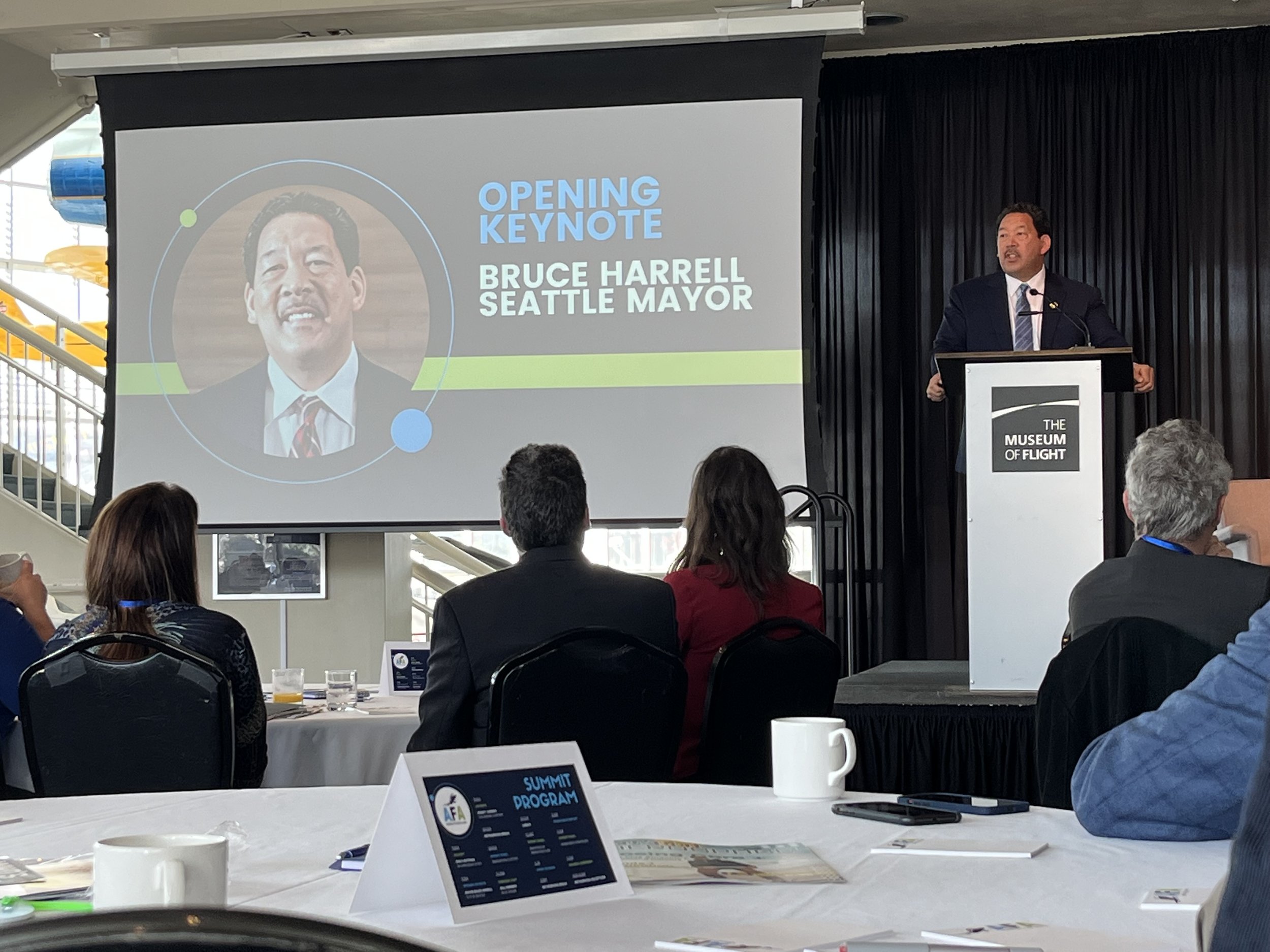On Tuesday, Center of Excellence staff attended the 17th annual Aerospace Futures Alliance summit, bringing together leaders in aviation, space, government and education to engage in the industry’s most pressing challenges.
Held at the Museum of Flight, the morning led off with Seattle Mayor Bruce Harrell presenting the opening keynote. Mayor Harrell focused on how industry can support education, with a focus on the importance of mentorship. Harrell touched on public safety, the necessity of a strong tax base and the value of industry. He asked attendees to consider what motivates them and how to use that motivation to work together.
Wendy Sowers, Director of Boeing Commercial Aviation’s Market Forecasting and Analysis division, presented next on the publicly-available data behind aviation’s recovery.
Sowers split recovery dynamics into three categories:
- Demand: passenger interest in flying, health and cost considerations
- Supply: airline workforce including available pilots, accept to capital and decisions on fleet retirements and available aircraft
- Regulation: travel restrictions that affect flying, sustainability initiatives, airport infrastructure
This past summer saw an acceleration in international travel, with many trans-Atlantic routes recovering to 2019 levels despite the workforce
challenges at many European airports. Aircraft load factors in the United States are above 2019 levels, partly due to limited staffing on the ground and in the air for many airlines.
Globally, air travel has recovered to 74% of 2019 levels. North America leads with 96% recovered and Latin America is close with 89% recovered. Asia and Oceania lag at 48% recovered, much of the lag due to China’s continued lockdowns.
Sowers shared trends she’s seeing across an increasingly-competitive industry, pointing to 36 airlines that are slated to begin operations this
year in 29 countries, with airline names like Flair, Play, Breeze, Flyr and Avelo joining the industry.
Air cargo continues to be an industry bright spot. Cargo fleets grew 30% in recent years and many new competitors are entering the industry, including shipping giant Maersk buying planes to build out a multimodal freight solution. Sowers sees evolving supply chain strategies as a driver of continued growth in air cargo, especially as air cargo becomes less costly comparatively.
Sowers closed with Boeing’s 20-year forecast: long-term fundamentals remain intact; airlines will need 41,170 new airplanes; and cargo airlines will need 2,800 freighters by 2041. Overall, the global fleet will nearly double over the next two decades. The projections point to the critical importance of Washington’s educational systems to meet the need for skilled workers in the coming decades.
